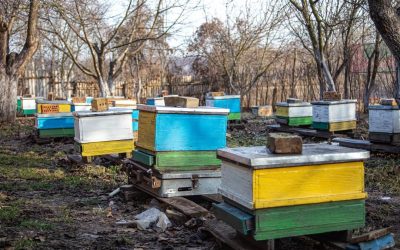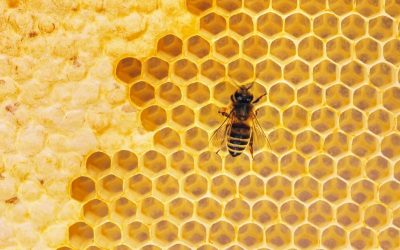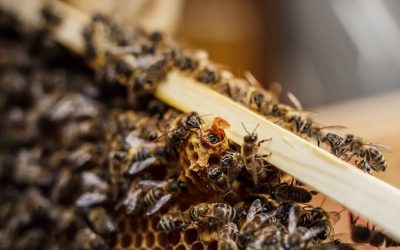Honey Harvesting Season
The honey harvesting season varies depending on the location, climate, and availability of nectar sources. Generally, honey is harvested when the bees have capped the cells containing mature and ripened honey. In many regions, the primary honey flow occurs during the spring and summer months when nectar sources are abundant. However, the specific timing of honey harvesting can vary. It is essential for beekeepers to monitor their colonies closely and consider local factors to determine the best time for harvest.
When is the Best Time to Harvest Honey?
The best time to harvest honey is when the bees have capped the majority of honey cells in the hive. This indicates that the water content of the honey is sufficiently low, making it less prone to spoilage. Bees instinctively cap the cells when the honey reaches a moisture level of around 18-20%. Harvesting honey too early may result in honey with higher water content, which can lead to fermentation or spoilage. On the other hand, delaying the harvest for too long may result in honeydew contamination or an increased risk of honey crystallization.
To determine if honey is ready for harvest, beekeepers can use a refractometer to measure the moisture content of the honey. The ideal moisture level for honey harvesting is below 18%.
Pre-Harvesting Inspection
Before harvesting honey, it is crucial to conduct a thorough inspection of the hive to ensure the overall health and readiness of the colony.
-
- Honey Super Readiness: Assess the honey supers, which are the additional boxes placed on top of the brood chambers for honey storage. Check if the honey frames are mostly capped, indicating ripeness. Avoid harvesting frames with a significant amount of uncapped honey, as it may not be fully mature.
- Hive Strength: Evaluate the strength of the colony. A strong and populous colony ensures efficient honey production and better sustainability. Ensure that the colony has enough bees to support the hive’s function and maintain a healthy brood.
- Disease and Pest Inspection: Inspect the hive for any signs of diseases or pests. Treat any issues promptly to maintain the health of the bees and minimize the risk of contamination in the harvested honey.
Steps for Harvesting Honey
Once you have determined that the honey is ripe for harvest and your hive is ready, you can proceed with the honey harvesting process.
-
- Protective Gear: Wear appropriate protective clothing, including a beekeeping suit, gloves, and a veil, to safeguard yourself from stings and minimize disruptions to the bees during the harvest.
- Smoking the Hive: Use a beekeeping smoker to calm the bees and reduce their defensive behavior. Gently puff smoke into the hive entrance and under the cover to encourage the bees to move away from the frames you will be harvesting.
- Frame Removal: Carefully remove the honey frames from the honey supers. Be cautious not to squish bees or damage the comb. Use a bee brush or a gentle shake to remove any remaining bees from the frames.
- Uncapping: Use a honey uncapping knife or uncapping fork to remove the wax cappings from the honeycomb cells. This exposes the honey for extraction. You can collect the wax cappings for future use or processing.
- Extraction: Extract the honey from the uncapped frames using a honey extractor. A honey extractor spins the frames, using centrifugal force to separate the honey from the comb. This process allows you to collect the honey without damaging the comb.
- Filtering: After extraction, filter the honey to remove any wax particles, bee parts, or other impurities. Use a fine mesh strainer or a honey filter to achieve a smooth and clear final product.
- Honey Storage: Transfer the filtered honey into clean and food-grade containers. Store the containers in a cool and dark place to maintain the quality and prevent crystallization.
Post-Harvesting Activities
Honey harvesting is not complete once the honey has been extracted. There are essential post-harvest activities to ensure the health of the hive and the success of future honey flows.
-
- Honey Super Replacement: Replace the harvested honey supers with fresh and empty ones to allow the bees to continue their honey production. This ensures that the hive remains strong and provides space for future nectar storage.
- Feeding: Assess the colony’s food reserves after honey harvesting. If necessary, provide supplemental feeding to support the bees during times of scarcity or to aid in their recovery after honey production.
- Pest and Disease Control: Maintain vigilance in monitoring and controlling pests and diseases. Implement integrated pest management techniques and follow recommended practices to ensure the colony’s health and prevent future issues.
Common Mistakes and How to Avoid Them
As a new beekeeper, it is essential to be aware of common mistakes during honey harvesting and take steps to avoid them. Here are a few common pitfalls and tips to help you navigate them:
-
- Premature Harvest: Avoid harvesting honey too early. Ensure that the majority of honey cells are capped to prevent issues related to high water content and fermentation.
- Insufficient Bee Population: A weak colony may not produce enough surplus honey for harvesting. Ensure that your hive has a sufficient number of bees to support honey production and sustain the hive’s needs.
- Inadequate Preparation: Thoroughly inspect the hive, evaluate honey readiness, and gather the necessary equipment and protective gear before starting the honey harvesting process. Being well-prepared will save time and minimize disruptions to the bees.
- Rough Handling: Handle the frames and honey supers with care to avoid damaging the comb or injuring the bees. Gentle and careful handling ensures the overall health and productivity of the colony.
Frequently Asked Questions
What Month is Honey Harvested?
The exact month can vary depending on local climate and flora. However, in most temperate climates, honey is typically harvested between late spring and early summer.
How is Honey Harvested?
Honey is harvested by removing frames from the hive that have been filled with honey and capped by the bees. The wax caps are then removed, and the honey is extracted from the combs using a centrifugal extractor.
What is Harvesting Honey Called?
Harvesting honey is typically just referred to as “honey harvesting” or “collecting honey.”
How Many Times Do You Harvest Honey a Year?
This depends on your local climate and the type of bees you have. In most temperate climates, beekeepers typically harvest honey once a year, usually in late spring or early summer.
Conclusion
Honey harvesting is a delightful experience that rewards beekeepers with the delicious and natural bounty of their bee colonies. By understanding the ideal timing for honey harvesting, conducting pre-harvest inspections, following proper harvesting techniques, and implementing post-harvest activities, new beekeepers can embark on a successful honey harvesting journey. Responsible honey harvesting practices not only ensure a bountiful harvest but also promote the well-being and sustainability of the hive and the overall health of the bee colony.




